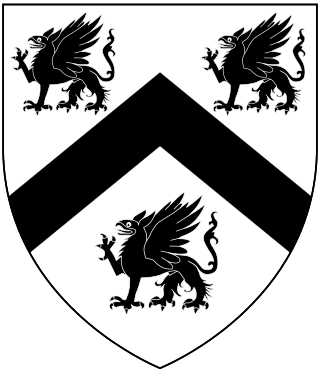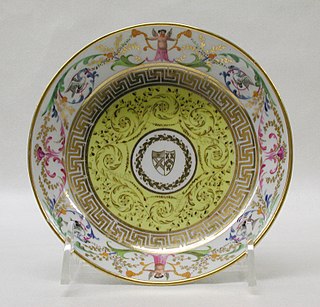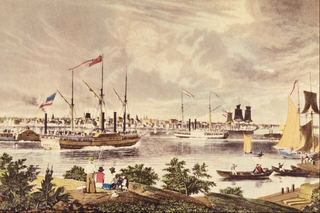
Sutton Coldfield or the Royal Town of Sutton Coldfield, known locally as Sutton, is a town and civil parish in the City of Birmingham, West Midlands, England. The town lies around 8 miles northeast of Birmingham city centre, 9 miles south of Lichfield, 7 miles southwest of Tamworth and 7 miles east of Walsall.
James Pigott Pritchett was an English architect. He lived in London and York and his practice stretched from Lincolnshire to the Scottish borders.

Heneage Finch, 4th Earl of Aylesford, PC, FRS, FSA, styled Lord Guernsey between 1757 and 1777, was a British politician who sat in the House of Commons from 1772 to 1777 when he succeeded to a peerage. He was also a landscape artist.
William Hull was an English watercolour landscape and still-life painter, illustrator and etcher, who exhibited at the Royal Academy in London. He was the brother of Edward Hull, another well known illustrator and painter.

James Basire, also known as James Basire Sr., was a British engraver. He is the most significant of a family of engravers, and noted for his apprenticing of the young William Blake.

William Artaud (1763–1823) was an English painter of portraits and biblical subjects.

John Augustus Atkinson (c.1775–1830) was an English artist, engraver and watercolourist.

John James Barralet was an Irish artist who spent the later part of his career in the United States.

Thomas Baxter Jnr. was an English porcelain painter, and a watercolour painter and illustrator.

William James Bennett (1787−1844), was a British-born painter and engraver, active in the United States from 1816. He was a founder member of the "Associated Artists in Watercolour" in 1808. and twelve years later was elected an Associate of the Water-Colour Society.

Charles Vacher (1818–1883) was a British painter in watercolours.

James Cassie RSA was a Scottish marine landscape, portrait, genre and animal painter.

William Fowler was an English artist.
William Derby (1786–1847) was an English portraitist, miniature painter and copyist.

Edward Duncan was a British watercolourist known for his depictions of coastal views and shipping. He was a member of the Royal Watercolour Society and received Royal patronage from Queen Victoria.
Frederick Mackenzie (c.1788–1854) was a British watercolourist and architectural draughtsman.

Charles Bell FRIBA (1846–99) was a British architect who designed buildings in the United Kingdom, including over 60 Wesleyan Methodist chapels.
Alexander Wallace Rimington (1854–1918), ARE, RBA, Hon. FSA was an etcher, painter, illustrator, author and Professor of Fine Arts at Queen's College, London. He also invented a keyboard instrument that was designed to project different colours in harmony with music.

Bryan Browning (1773–1856) was an English architect working in Stamford.
Benjamin Richard Green (1807/8–1876) was an English watercolour painter and author. He exhibited at the Royal Academy and Suffolk Street exhibitions from 1832, and executed several works in lithography besides watercolours.














